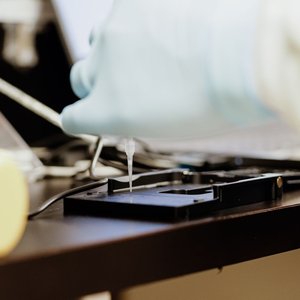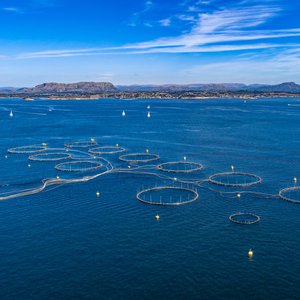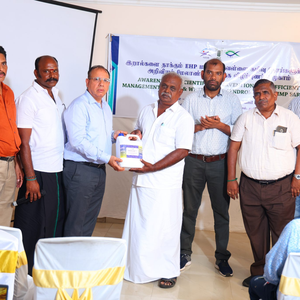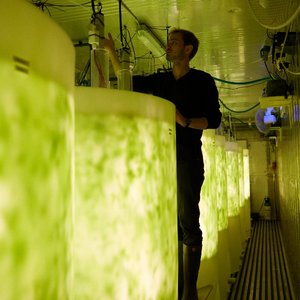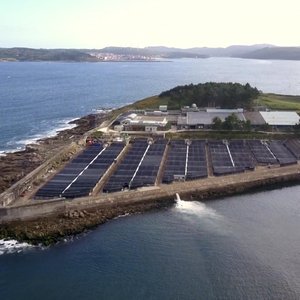Ten years ago, at an Aquatic Genomics conference in Athens, Ian Johnston was asked a simple yet transformative question: “Do you think you could help us run our own genetic selection program?” That moment changed the trajectory of the University of St. Andrews spin-out company Xelect founded by Ian and PhD student Tom Ashton a few years previously.
The company was originally established to license genetic markers associated with increased fillet yield and quality in Atlantic salmon. That chance meeting led to a major pivot in the business model. At the time, aquaculture companies faced significant barriers in running their own genetics programs, requiring expertise in software development, laboratory sciences, quantitative genetics, and bioinformatics – resources that only the largest players could afford.
The founders recognized an opportunity to fulfill an industry need for an agile, innovative partner that could act as the genetics department for a wide range of aquaculture companies. Since then, Xelect has grown rapidly from a few borrowed benches in a university lab to a world-leading aquaculture genetics company. Headquartered in St. Andrews, Scotland, with a state-of-the-art sequencing laboratory, Xelect manages over 30 breeding programs globally, spanning 20 species and working with clients ranging from national governments to some of the most prominent names in aquaculture.
Rapid growth
The evolution has been rapid and the results speak for themselves: 21% growth improvements in a single generation for a seabass producer and more than 19% increase in survival rates for a salmon producer.
A successful genetics program requires the ability to analyze vast quantities of data, from genetic sequencing to thousands of individual trait measurements such as weight, length, and fillet colour. Xelect's journey began with simple spreadsheet-based analyses, but an early strategic decision led to the development of Optimate – a powerful bespoke software package specifically for aquaculture.
Recognizing that off-the-shelf selection software was largely designed for terrestrial animals, founders Tom and Ian identified a significant gap in the market and initially collaborated with the Roslin Institute to address it. While Optimate can process enormous datasets and perform complex analyses that would be impossible manually, its findings are ultimately implemented through the team of genetics experts. The software doesn't replace human judgment but rather enhances it, generating sophisticated mating recommendations that specialists then refine and adapt to provide maximum genetic progress while protecting genetic health under real-world hatchery constraints.
Over the past decade, this combination of advanced software capabilities and human expertise has evolved to offer unparalleled results in maximizing genetic potential across all aquaculture species and selection systems.
Head of genetics, Mark Looseley, commented that “aquaculture breeding populations typically have lots of genetic variation, allowing rapid rates of genetic gain. However, the reproductive biology of many species makes implementing mating plans tricky and it can be difficult to protect genetic diversity while simultaneously selecting for key traits. Optimate has been developed with Xelect and can now deal with most hatchery scenarios (including group spawning species). We have increased the efficiency of our optimization algorithms so that runs that would previously have taken hours to complete now take minutes.”
This allows real-time redesign of mating plans improving results and reducing the workload for hatchery staff. This combination of cutting-edge technology and deep, long-term customer relationships allows Xelect to design breeding programs that maximize commercial returns.
A new era with Genus
In December 2023, Xelect became part of Genus Group, a world leader in terrestrial livestock genetics. This partnership provides Xelect with access to one of the most advanced genetics R&D platforms, including expertise in breeding technologies and gene editing. This helped to consolidate Xelect as a leading name in aquaculture genetics, with a particular specialism in translating genetic improvements into real-world performance gains.
Marie Smedley, head of Breeding Programs, was the first breeding program manager hired by Xelect. “I had the daunting task of designing breeding programs for a myriad of aquaculture systems. Reproductive systems in aquaculture are remarkably different from terrestrial species, where genetic improvement pathways are far more established. Over the years, we have acquired incredible specialists, had exposure to a large number of species and customers, and continually researched the best route to increased genetic value. Most importantly, we have had the rewarding experience of seeing our customer programs succeed over multiple generations. We care greatly about our customer priorities and will continue to offer premium genetics to any client: scale is no obstacle.”
Looking to the future
To mark a decade of providing selective breeding programs in aquaculture, Xelect has also announced the launch of a new website and refreshed brand. Marketing lead Craig Fairgrieve, said that “like the species we manage, Xelect continues to evolve. The new positioning retains the pride we have in Xelect’s achievements, while focusing on the future and our drive to continually improve the services we offer.”
The company is also expanding its dedicated aquaculture genetics laboratory in St. Andrews, Scotland, with plans for a high-throughput, fully automated facility. Looking ahead, Xelect’s global head, Chris Wallard, emphasizes that the company is already preparing for the next decade of innovation.
“In the coming year, we’ll be making significant announcements about major enhancements to our services. We’ve listened to our customers, analyzed emerging technologies, and identified key advancements that will unlock even greater breeding program performance. From digitalization to novel phenotyping techniques and emerging breeding technologies, we are committed to staying at the forefront of aquaculture genetics. We’ve built a globally recognized reputation, but we’re not resting on our laurels.”




